Casio MG-510 MIDI Guitar
![]()
Casio MG-510 MIDI Guitar |
|
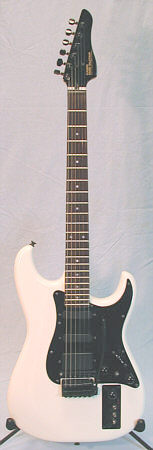 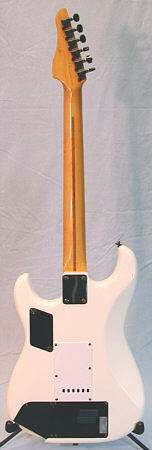
|
Best-known for digital watches and keyboards, Japanese electronics giant Casio took a tentative step into guitar synthesis in 1987, following in the footsteps of Roland, with this model and its weirdly shaped sibling, the MG-500 and the more up-market PG- series (which also contained Casio's VZ sound module technology). The MG510 was apparently the most widely produced MG-series guitar.
In common with all the MG- and PG- systems it converts pitch to MIDI, deriving the pitch information from a These are the only instruments made to date to accomplish these tasks completely within the guitar. (No add-on units or expensive special cables!), but by 1990 Casio was out of the MIDI guitar business, leaving the market to Roland. These guitars were produced under contract for Casio by Fuji Gen Gakki, who also built the Roland and Ibanez MIDI guitars, and are |
| surprisingly
solid and playable instruments. The MIDI tracking was also well-regarded
at the time and Stanley Jordan became the most celebrated endorser of
the Casio line, playing a highly modified PG-380.
The body is basswood (shaped very similar to a Strat, with slightly pointier horns). Pickups are also similar to a Strat, but with a bridge humbucker splittable by a toggle switch located between the guitar volume and tone controls. The bridge is similar to standard Strat non-locking vibrato. The neck is maple with a rosewood 22-fret fingerboard and a graphite low-friction nut. The MG-series electronics also feature a MIDI volume control, a trio of three-way switches to handle selection of guitar sound, MIDI sound, or both; octave selection (down one, normal or up one); chromatic or normal (bend- transmitting) configuration, and program change. This last is ingenious: Flip the program change switch up, pick a single string while fretting it anywhere in the lowest 16 frets, and a program change message is sent over the MIDI cable. The system allows selection of 96 different programs. |
|
Cool Features: - Everything on-board - Decent quality Japanese-made guitar - Good MIDI tracking
|
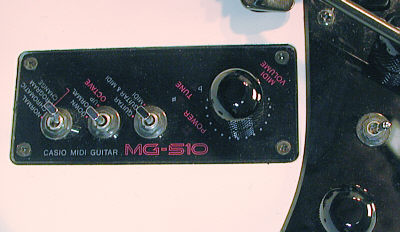
|
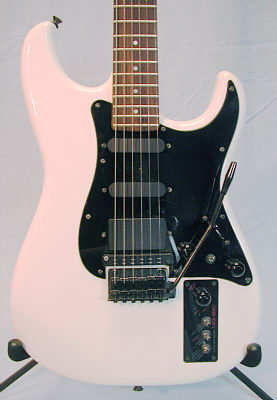 |
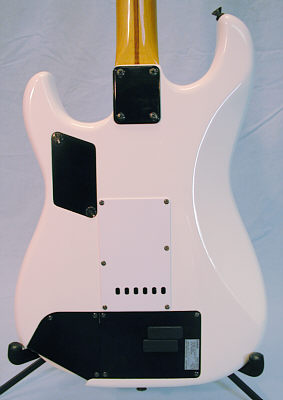 |